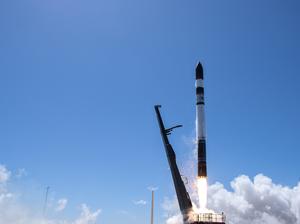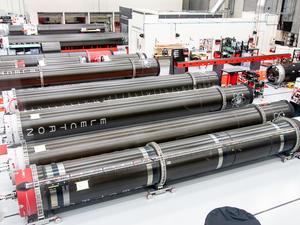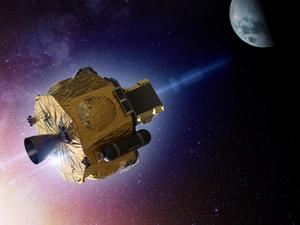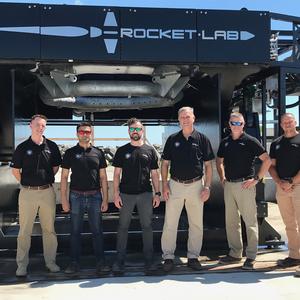
On the heels of a successful simulation, Rocket Lab USA Inc. said on Tuesday that it will attempt to recover a rocket booster by using a helicopter to snatch it out of mid-air during its next recovery mission, currently slated for the first half of next year.
The move comes after the Long Beach, California-based aerospace company tested the idea during its 22nd Electron rocket launch last week.
In a mission dubbed “Love at First Insight,” Rocket Lab (Nasdaq: RKLB) launched two satellites to orbit for geospatial monitoring company BlackSky (NYSE: BKSY) on Nov. 18. The secondary mission consisted of the controlled splashdown and retrieval of the rocket’s first stage from the ocean.
This demonstration included a helicopter that was stationed in the recovery zone about 200 nautical miles offshore. The helicopter was not involved with the recovery but tracked and visually observed the booster as it descended to Earth under a parachute, while maintaining communications with Mission Control and the recovery vessel stationed at sea.
Rocket Lab's recovery team reached the booster in the water within 80 minutes of lift-off — half the time it took during the company’s previous attempts. The first stage has since been returned to Rocket Lab’s Production Complex in Auckland, New Zealand, for analysis and inspection in preparation for future recovery operations.
The mission marked Rocket Lab’s third booster recovery attempt following successful recoveries a year ago and in May, despite an anomaly during the latter launch that resulted in the failure of its primary objective.
The company now moves into the final phase of its recovery program with aerial capture. Rocket Lab said that for the next mission, the recovery helicopter will have auxiliary fuel tanks to accommodate an extended flight time.
In addition, the launch vehicle will undergo improvements including a thermal protection system applied to the entire stage and the nine Rutherford engines in order to help it endure heat of up to 2,400 degrees Celsius during re-entry. There will also be modifications to the parachute system including an engagement line for the recovery helicopter to snag.
Rocket Lab still plans to position engineers and a recovery vessel at sea for the helicopter recovery mission, but the goal will be for the helicopter to return Electron’s booster to the mainland.
“As one of only two launch companies to repeatedly recover orbital-class boosters from space, we’re ready to take the final step and begin collecting them mid-air with a helicopter to race us closer to launch, catch, repeat with the world’s first reusable, orbital-class commercial small rocket,” said Rocket Lab CEO Peter Beck in a statement.






